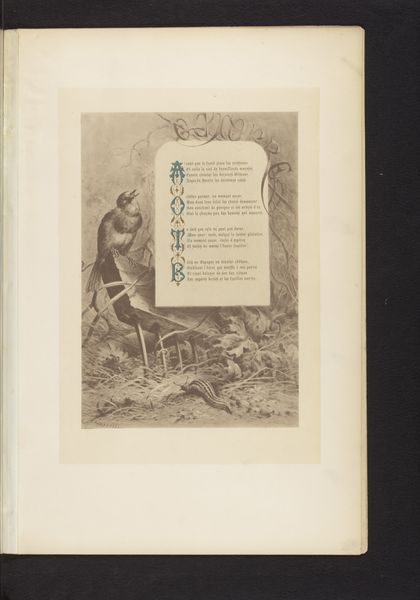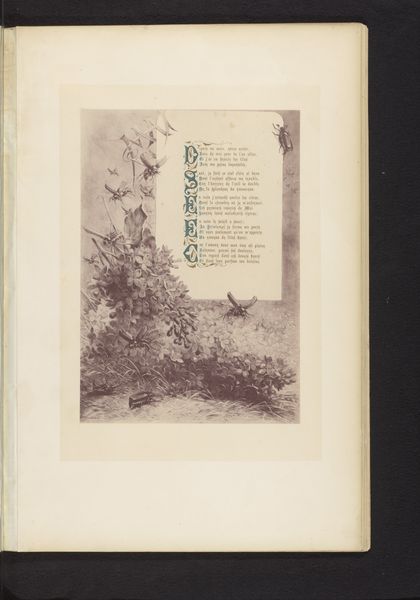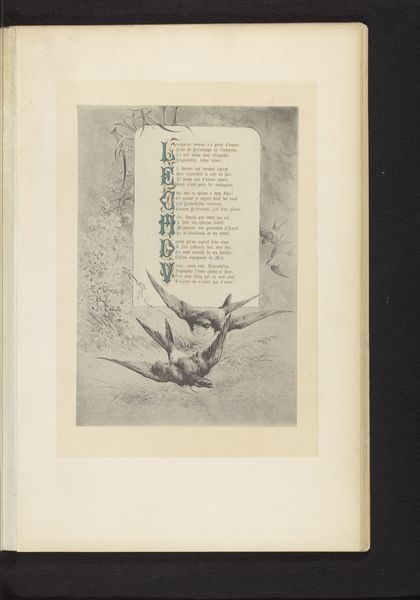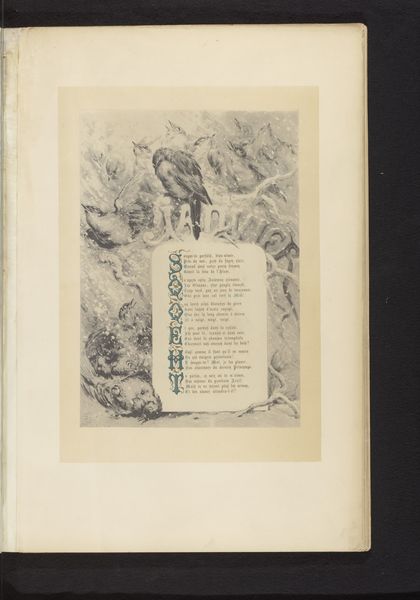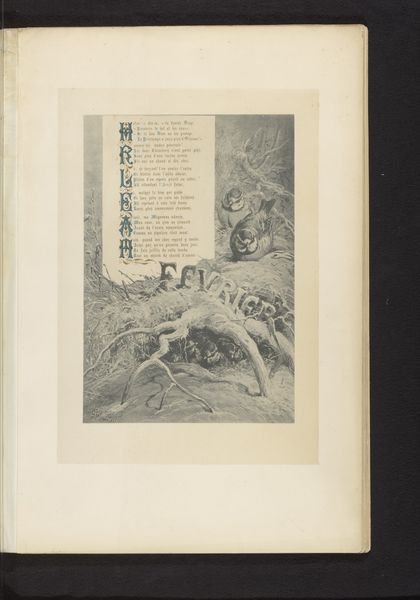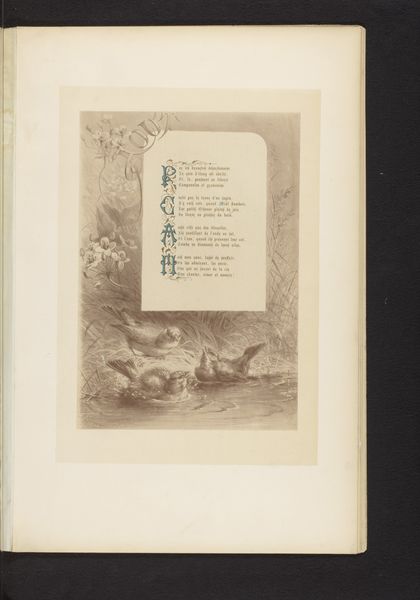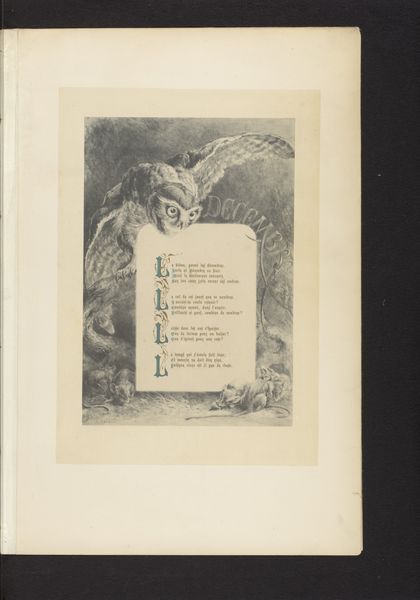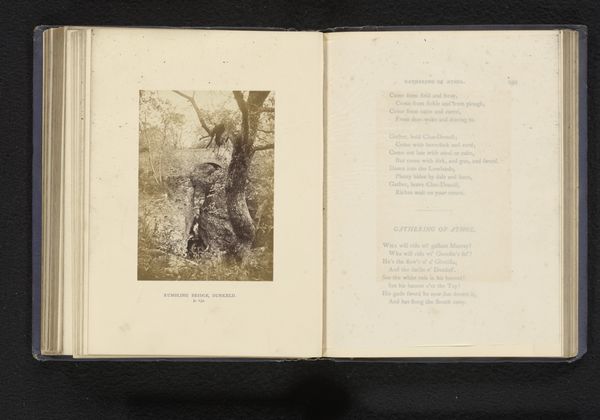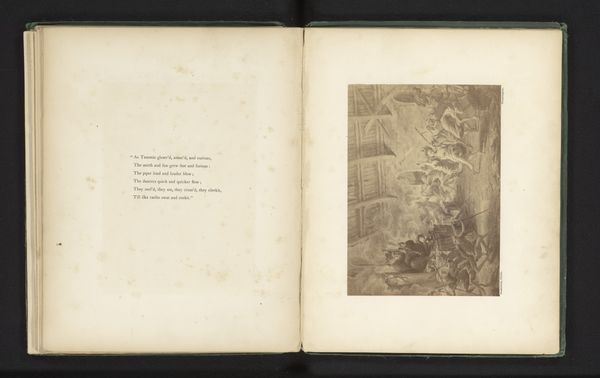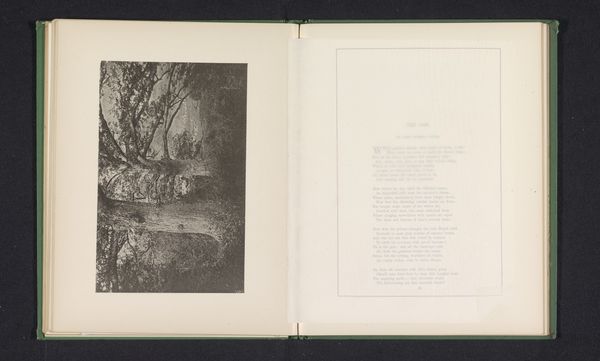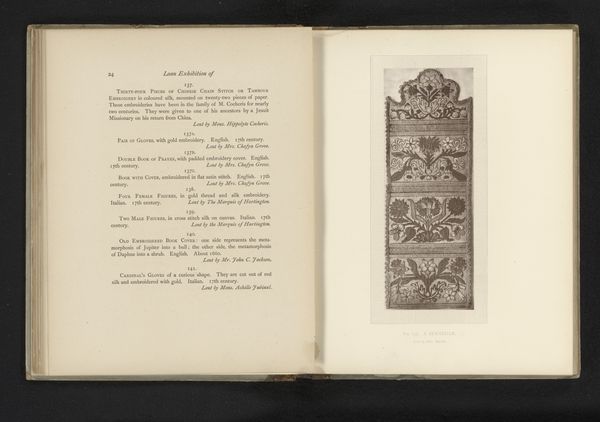
Reproductie van een prent van slakken en vogels, met het gedicht Septembre van François Coppée, door Hector Giacomelli before 1876
0:00
0:00
drawing, print, paper, engraving
#
drawing
#
aged paper
#
homemade paper
#
paper non-digital material
#
narrative-art
#
paperlike
# print
#
landscape
#
bird
#
personal journal design
#
figuration
#
paper
#
folded paper
#
publication mockup
#
line
#
letter paper
#
paper medium
#
engraving
#
publication design
Dimensions: height 335 mm, width 231 mm
Copyright: Rijks Museum: Open Domain
Editor: So, this print from before 1876 is titled "Reproduction of a print of snails and birds, with the poem 'Septembre' by François Coppée, by Hector Giacomelli." It's incredibly detailed, with both text and illustrations fitting onto what looks like a single piece of paper. It makes me think of natural history illustrations and printed ephemera from the era. What’s your interpretation of this artwork? Curator: Well, the combination of natural imagery and poetry immediately situates this piece within the 19th-century cultural obsession with nature, particularly Romantic notions of nature's beauty and transience. Prints like this circulated widely, acting almost as proto-photographs that democratized art consumption. Did they have the same accessibility we associate with mass media today? Editor: I imagine it was relatively easier to disseminate such printed images as opposed to paintings, which would usually be reserved for a privileged few? Curator: Precisely. Reproductions played a crucial role in shaping visual culture for wider audiences, who might only otherwise engage with art through religious iconography or public monuments. Think of these prints as early forms of visual education, mediating understandings of literature and the natural world. I would wonder, therefore, how this print contributed to conversations around nationhood, class, and aesthetic sensibilities during its time? What sentiments do you think a poem like “Septembre” evokes when coupled with these natural symbols? Editor: That is interesting to consider, that something seemingly just aesthetic had such wider political impacts. I guess that a lot of artwork then and today do shape wider thinking about social and historical phenomena. Thanks! Curator: Absolutely. By considering how these images circulated and what values they promoted, we can start to understand art’s broader impact beyond just individual appreciation. We learn a lot about audience when we reflect on distribution.
Comments
No comments
Be the first to comment and join the conversation on the ultimate creative platform.
